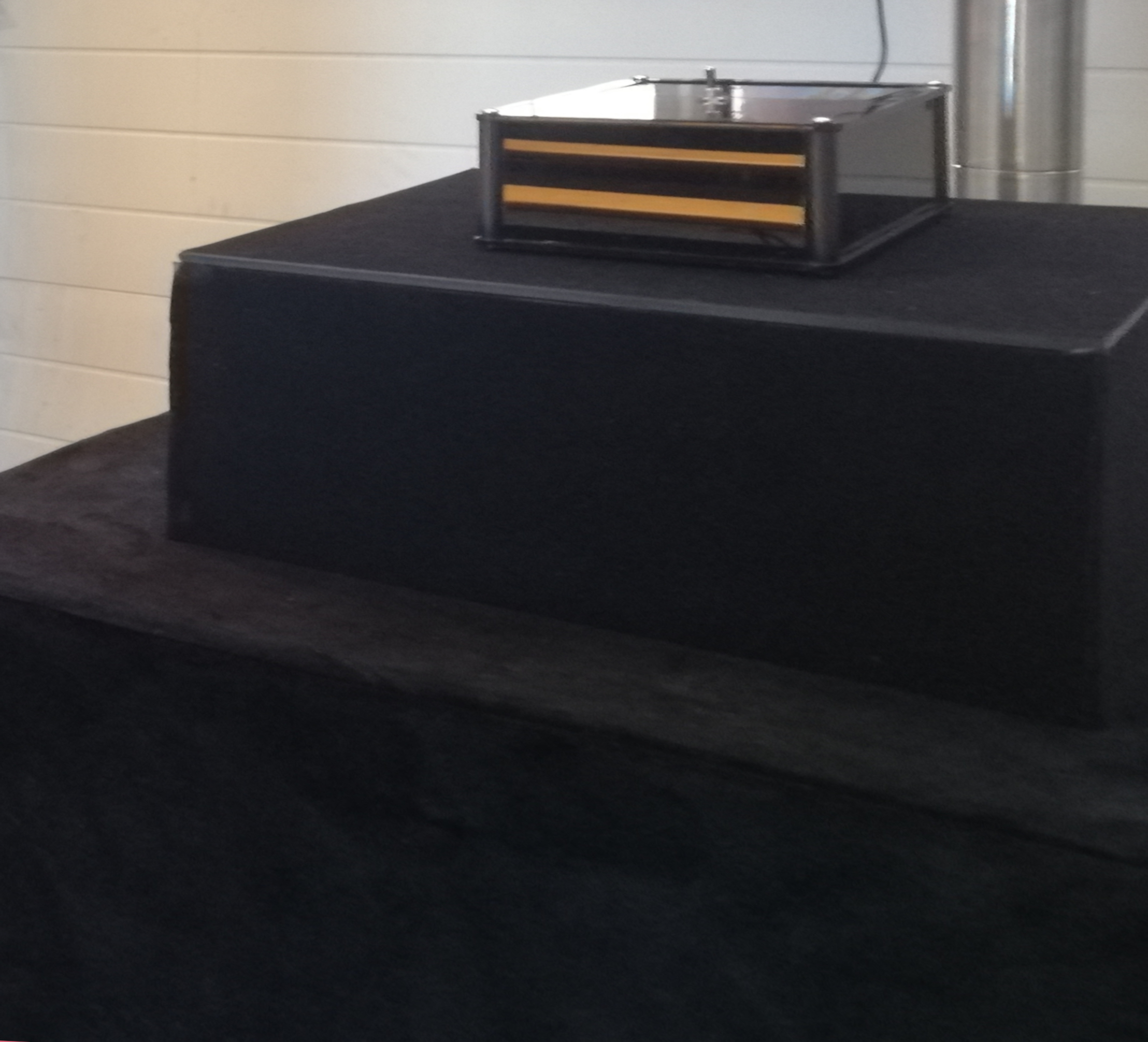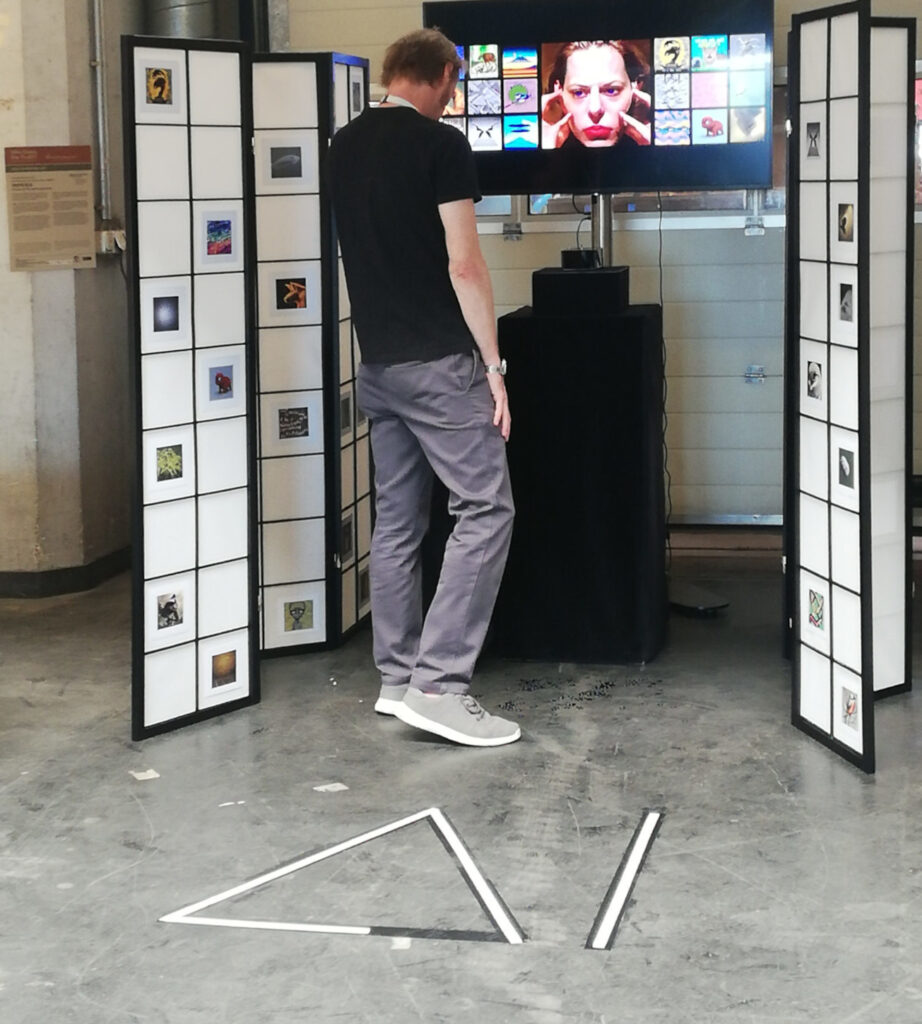Are we already enough machine to deal with artificial intelligence?
MEMESIS refers to the pillars of robotics (Asimovs Robotic Laws), information theory (Claude Shannons “useless machine”) and cybernetics (Turing-Test): In hyper-communication with the machine, humans recognizes that their insight is limited, so that the machine seems to have a life of its own. In the discrete therapeutic situation of MEMESIS, illusion and reality collide.
Memesis is an oracle in the age of automation. Memesis simulates the topic of AI and provokes by means of a reverse Turing test: Are we already enough machine to deal with artificial intelligence?
When you enter Memesis and switch on the “useless machine,” you come into contact with the Oracle. The oracle is strange and speaks in the almost extinct language of the Pirahã, which works without recursion and thus seems to contradict universal grammar: this voice indicates the current state of the machine. The oracle answers with an intelligence without number and time.
non-universal grammar
what would chomsky say?
In a therapeutic-experimental setting, a person uses this black box as a utopia: the machine switches itself off (Asimov’s robot laws), as a dystopia: if you switch the machine off, it switches itself on again (Shannon recursive) and in the Turing test: The useless machine passes the Turing test if the (life-weary) machine terminates itself.
*
“The Law of Contradiction”: Trivial and non-trivial machines and how to feel.
Cybernetics distinguishes between trivial and non-trivial machines. A thermostat is an example for a trivial machine = white box. A non-trivial machine is a human being, which in its complexity and incommensurability, in its incomparability, is ultimately unpredictable = black box.
The classic human/machine distinction is the Turing test / Turing machine. The Turing machine is not a machine, but a calculus, a formal language description of a procedure for the analysis of algorithms, and is actually called a trivial machine (apparatus) in cybernetics. However, the Turing machine is always used to show that “mental work” can be mechanized: machines replace humans, or humans can hardly distinguish machines from humans.
In order to enter the interspace of human and machine and to investigate the artificial hypercommunication between artificial intelligence (black box) and human (black box), we develop a mechanical black box: a mechanical black box analogous to the useless machine.
A useless machine is a device that has only one function, but its direct purpose is intentionally unknown. In the useless machine, the only function of the device is to turn itself off by flipping its own “off” switch. The version of the useless machine that became popular in information theory is a box with a simple switch that, when “turned on,” causes a hand or lever to appear from inside the box, “turning off” the machine before it disappears back into the box. The device was also called “Leave Me Alone Box”.
SCHEMA
3 variations – reaction scheme: algorithm + random generator.
Utopia: The machine switches itself off (Asimov robot laws).
Dystopia: if you turn the machine off, it turns itself on again (Shannon reverse).
Combination with Turing: only when the (life-weary) machine terminates itself, it passes the Turing test.
Reaction scheme: variants of the useless machine:
Items
e = human turned on.
E = Machine switches on.
a = human switches off.
A = machine switches off.
Algorithms and the random generator are programmed for the response scheme.
Scheme:
e > A
a > E
E > A
A > E
Random Variant:
e > X
a > X
Result
1) The programmer of the useless-machine algorithm has passed the Turing test.
2) The user of the useless machine does not pass the reverse Turing test because he/she is a human being (useless machine = black box).
Irritated by the experimental set-up of the algorithm, the user of the “useless machine” does not pass the reverse Turing test, but the machine itself does, which leads to dadaistic situations.

claude shannon dada collage

curated by martin honzik / christl baur
servus.at / credits Ada Production / mechatrontic engineer Gregor hagmüller
memesis @ ars electronica 2023 | theme exhibition
September 2023 | postcity linz
ars electronica festival catalogue

meme types implemented on japanease paravents in a therapeutic setting
theme exhibition | Foundinglab Exhibition


